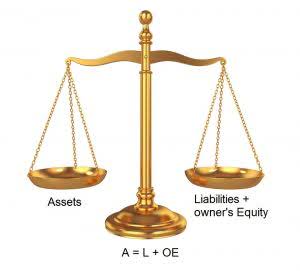
Notice how the far right-hand row lists the current balance of the petty cash fund? This lets you reconcile—that’s fancy accounting speak for “double check”—your petty cash fund on the fly. This is the first entry in your petty cash account, represented by the following journal entry that shows petty cash leaving your bank account. Small businesses will often record all disbursements in a log and put one person in charge of petty cash to make sure none of the funds go missing.
Because a petty cash voucher is made out for all disbursements, the total of the vouchers and the remaining cash should always equal the amount of the fund (in this case, $100). The custodian of the petty cash fund is in charge of approving callable bonds definition and making all disbursements from the fund. The greatest degree of internal control can be maintained when a petty cash fund under the control of one individual is established to handle these expenditures. Petty cash is a useful tool for all businesses to have – large or small. But it’s vital that you maintain diligent accounts so your balance sheet is accurate.

But if you find that most of your petty cash is not being used, the fund amount might be too large. You should deposit the surplus petty cash into the company bank account. If you have more than one employee, you could delegate managing the account. The custodian is tasked to overlook and safeguard the account by issuing cash, approving reimbursements, and recording the debits and credits to the account. For such instances, every business has a separate fund to deal with small frequent expenditures.
All of our content is based on objective analysis, and the opinions are our own. Financial accountants (and independent auditors) are generally not concerned with petty cash because of the immateriality of the amounts. To accomplish the reimbursement, the treasurer’s office provides the requested amount (by check or currency) to the custodian. Actual cash remaining on hand is $15.48, indicating a shortage of $0.20 ($100 $84.32 $15.68, which is the amount that should be on hand; because only $15.48 is on hand, there is a $0.20 shortage). As a practical entrepreneur, you can’t expect everything to go your way.
How confident are you in your long term financial plan?
At Finance Strategists, we partner with financial experts to ensure the accuracy of our financial content. For information pertaining to the registration status of 11 Financial, please contact the state securities regulators for those states in which 11 Financial maintains a registration filing. 11 Financial is a registered investment adviser located in Lufkin, Texas. 11 Financial may only transact business in those states in which it is registered, or qualifies for an exemption or exclusion from registration requirements. For example, when you sell $100 worth of merchandise to customer “a”, debit sales for $100 and credit cash for $100. Management should be concerned about controlling the proper use of petty cash.
Which of these is most important for your financial advisor to have?
That depends on how many small expenses you make and how often you make them, but most businesses seem fine carrying between $100 and $200 in petty cash. Many small businesses don’t have a formal system for petty cash—owners will simply pay out of pocket for small expenses and hope nothing goes wrong. It sure would be nice to have some spare cash around to pay for these small business expenses, wouldn’t it? This voucher indicates the purpose of the expenditure, the date, and the name of the person receiving the cash.
Whatever steps are deemed necessary (such as surprise counts) should be performed to assure that controls are adequate. In most companies, there are many occasions when a small amount of cash must be spent at short notice. The security aspect is often important to small companies, who have long feared that keeping cash around is an invitation to crime. Explore GnuCash’s features, safety, and comparisons with Bench Accounting, QuickBooks and other alternatives. Your concise guide to understanding GnuCash’s role in financial software.
How do you record in a cash journal?
Steps to minimize abuse include limiting the amount that can be disbursed through petty cash, requiring receipts, and monthly audits by a responsible person other than the custodian. The English word “petty” derives from the French petit, which means “small” or “little.” Likewise, “petty” means minor or insignificant. So petty cash refers to a small sum of money set aside for trifling or little purchases, as opposed to major expenses or bills. Petty cash is the money that a business or company keeps on hand to make small payments, purchases, and reimbursements. Either routine or unexpected, these are transactions for which writing a check or using a credit card is impractical or inconvenient. Commercial transactions are increasingly cashless—even at small retailers and restaurants, where purchases traditionally have relied heavily on coins.
Financial Accounting
- Many small businesses don’t have a formal system for petty cash—owners will simply pay out of pocket for small expenses and hope nothing goes wrong.
- They’ll usually keep it in a lockbox or a cash register, and will have some kind of system in place to make sure none of it gets lost.
- If you are reimbursed $20 for postage expenses, debit postage expense $20 and credit cash $20.
- It might be tempting to wing it for as long as you can, but setting up a proper petty cash system early is crucial.
- If the numbers don’t match, that means something went wrong, and you need to review each expense for any discrepancies.
This sum is the total withdrawn from the account during that time period. While it shouldn’t be a habitual practice, petty cash in a pinch can be used to make change for customers, if the till’s running short. The custodial duties generally include enforcing petty cash rules and regulations, requesting replenishments, and dispensing funds. Without a physical, dedicated place to keep the petty cash, you’ll probably lose track of it, and/or make so many exceptions to when you use the petty cash that it stops being useful. For example, if there are un-reimbursed expenditures from petty cash at the end of the year, expenses are understated and cash overstated.
Ask Any Financial Question
Since purchases using the petty cash fund are small, it’s typical to see purchase limits of $50 or less with a total account balance of a few hundred dollars. The Internal Revenue Service (IRS) recommends filing out petty cash slips and attaching them to receipts to record and document petty cash expenses. By having a petty cash cashier and a petty cash custodian, the dual-process helps to keep the funds secure and ensure that only those authorized have access to it.
This acts as a receipt, logging the amount of the withdrawal, the date, the purpose, and other details. Increasingly, these slips are electronic ones, entered in a digital spreadsheet or ledger. But it can be helpful to keep paper slips too, along with receipts from the purchases or payments (if possible). The use of a petty cash fund can circumvent certain internal controls.
When a petty cash fund is in use, petty cash transactions are still recorded on financial statements. The journal entry for giving the custodian more cash is a debit to the petty cash fund and a credit to cash. Balancing the petty cash account usually occurs when the fund needs to be replenished. The petty cash custodian brings all the slips or vouchers to the business’ bookkeeper, cashier, scaled agile business strategy integration or accountant.
Take self-paced courses to master the fundamentals of finance and connect with like-minded individuals. Someone on our team will connect you with a financial professional in our network holding the correct designation and expertise. Our mission is to empower readers with the most factual and reliable financial information possible to help them make informed decisions for their individual needs.










